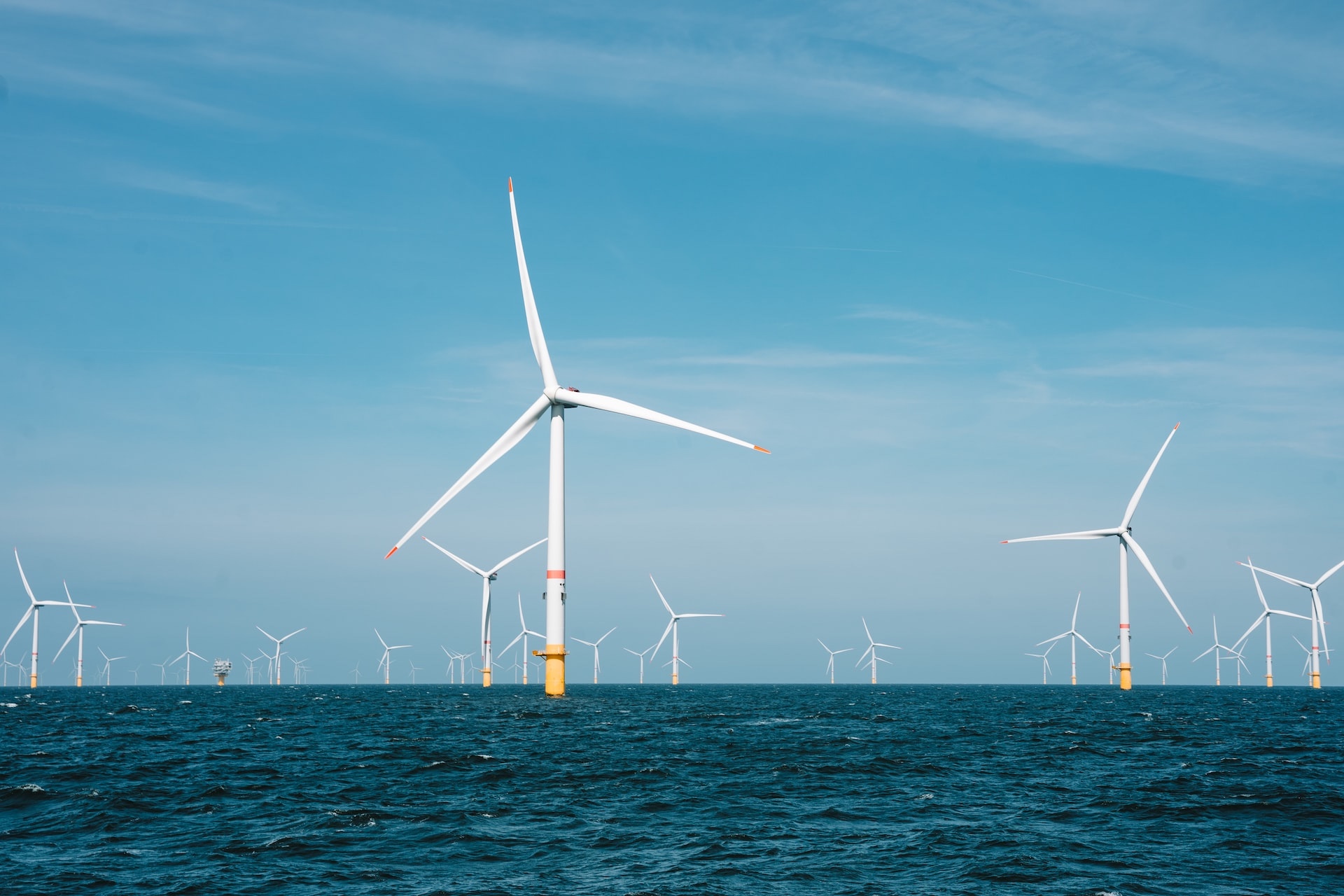Have a story idea
Have a story idea? Send it to us here.

Source : Jesse De Meulenaere, Unsplash
August 17, 2022
Author : Alex Bustillos
America is waking up to environmental challenges and concerns. It is looking for measures to replace non-renewable sources with natural energy sources.
In fact, the federal government has embarked on a 2030 goal of installing 30,000 megawatts of offshore wind generating capacity.
A step towards this is the proposed offshore wind farm in Virginia.
The Virginia State Corporation Commission (SCC) recently approved Dominion Energy to head up Virginia's Coastal Virginia Offshore Wind (CVOW) Project construction plans.
The project will consist of 176 wind turbines located about 27 miles off the coast of Virginia Beach and will have an estimated capital cost of $9.8 billion.
According to the Sierra Club, this will be the largest wind farm in the United States and the first to have diversity hiring requirements.
Dominion Energy, the Fortune 500 utility company based in Richmond, has already installed two pilot turbines. The installation of wind turbines is anticipated to commence in 2024. When completed in 2026, the CVOW project will be the nation's largest offshore wind farm, supplying renewable energy to 660,000 homes.
The SCC authorized Dominion to install approximately 17 miles of new transmission lines and other onshore infrastructure as part of its order.
"Our customers expect reliable, affordable energy, and offshore wind is key for delivering on that mission. We are very pleased that the commission has approved this important project that will benefit our customers," said Robert Blue, President and CEO of Dominion Energy Chair. "We are reviewing the specifics of the order, particularly the performance requirement."
According to the SCC, the cost recovery rider is expected to result in an average monthly bill increase of $4.72 and a peak monthly bill increase of $14.22 in 2027.?? This is for a residential customer consuming 1,000 kilowatt-hours of electricity per month over the projected 35-year lifetime of the project.
During its first ten years of operation, the project is expected to save Virginia customers more than $3 billion. However, if the current commodity market pressure trends continue, the savings could reach nearly $6 billion, nearly doubling the savings.
Significant concerns "were raised throughout the proceeding regarding the affordability of the project and the financial risk to ratepayers," according to the SCC. It imposed a slew of consumer safeguards, including a requirement that Dominion notifies the SCC within 30 days if the total project costs are expected to exceed the current estimate or if the final turbine installation is expected to be delayed past February 4, 2027.
Dominion stated that its offshore infrastructure would most likely include the following:
1. 205 wind turbine generators (WTGs) and associated foundations (monopiles);
2. 2-3 offshore substations and associated offshore substation foundations (jackets);
3. up to 300.7 miles of inter-array cables connecting WTGs and offshore substations;
4. up to nine buried submarine, high-voltage, alternating-current offshore export cables.
Onshore development will include:
1. A cable landing site in Virginia Beach will connect nine offshore export cables to 27 onshore export cables, transferring electricity to a central location. The up to 4.3-mile onshore export cable route will be buried within previously disturbed lands or existing roadways or rights-of-way;
2. A switching station in Virginia Beach;
3. Interconnection cables from the common location to the onshore substation via a new 20.3-mile overhead transmission line or overhead/underground line.
According to Hampton Roads Alliance President and CEO Doug Smith, the project is expected to attract significant investments while creating up to 900 construction jobs and 1,100 jobs in operations and maintenance.
The CVOW will assist Virginia in achieving its objective, outlined in the Virginia Clean Economy Act (VCEA), of carbon-free energy production by 2045, as well as Dominion Energy's aim of achieving net-zero carbon and methane emissions by 2050.
Follow Contractor News for the latest update on construction projects.
Category : Federal Government Green Economy Green Construction Investment in Infrastructure Market Watch State Government
